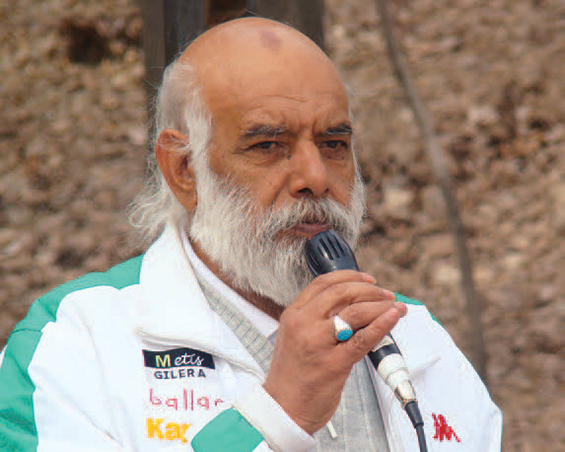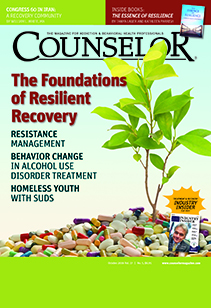LOADING
Share

The recent rise in opiate addiction within the Islamic Republic of Iran has triggered a wide variety or cultural and professional responses (Mokri, 2002; Razzaghi, Rahimi, Hosseni, Madani, & Chaterjee, 1999; Shariatirad & Maarefvand, 2013). Over the past three decades, such responses have varied widely—from detoxification units, inpatient and outpatient addiction treatment services, and opium rationing for older addicts to harsh antidrug measures that included fines, corporal punishment, and labor camps (Afkhami, 2009; Calabrese, 2007; Figg-Franzoi, 2011). Recent efforts have included prison-based treatment, the expansion of therapeutic communities and methadone maintenance clinics, specialized treatment for women, and expanded education and harm reduction services.
Addiction treatment in Iran has been provided by the government, universities, welfare organizations, private centers, and nongovernmental organizations (NGOs; Farnam, 2005). There has been significant growth in NGO responses to opiate addiction in Iran, including the explosive growth of Narcotics Anonymous (NA), which now constitutes 28 percent of all NA meetings worldwide (Lavitt, 2014), and the growth of other recovery communities, including Jamiat Ehyaie Ensani Kongreh 60 (Congress 60), Anjoman Tavalod-e-Dobare (Rebirth Society), Tavalodi Digar (Another Birth), and Rooyesh e Digar (Regrowth).
This photographic essay describes a recovery community that was founded in 1998 and has since grown to thirty-eight branches in Iran with more than twenty thousand members. The information provided is drawn from the author’s collaborations with this community over the past eight years.
Congress 60
When Mr. Hossein Dezhakam became addicted to alcohol, hashish, and opium, he applied his training as an engineer to experiment with ways he could break his addiction to these substances. After multiple attempts, he stumbled on a method of tapered pharmacotherapy using tincture of opium that led to his successful recovery. In 1998, he founded a community, the Human Revivification Society (Congress 60), to help others seeking addiction recovery. There was initial resistance to the use of opium tincture (OT) in the treatment of addiction, but this changed as the number of people achieving stable recoveries grew within Congress 60.
Congress 60 is organized into branches—sixteen in Tehran and twenty-two in other Iranian cities—and around six key roles: Guardian (founder/director), Didehban (fourteen-member parliament of Congress 60 responsible for overall policy and planning), Marzbans (a seven-person executive team), Mosafer (travelers, those seeking treatment and recovery from addiction), Hamsafar (companions, family members, and friends of each traveler) and the guides who supervise the treatment process.
Congress 60 members regularly meet in large workshops presented by Congress 60 leaders or by university professors who volunteer their time to Congress 60. Following each workshop, each guide meets with their assigned students (legion) in a discussion group.
Financial support for Congress 60 activities comes almost exclusively from voluntary donations collected from members at the end of each session. There are no paid employees of Congress 60; all roles serve in a voluntary capacity.
The philosophy of Congress 60 is outlined in two books written by Mr. Hossein Dezhakam: Crossing the Zone Sixty Degrees below Zero (2011) and Love: Fourteen Valleys for Recovery (2011). These books portray addiction as an affliction of the body, psyche, and worldview and express the need to address each of these dimensions within the recovery process.
The theory of addiction that undergirds the physical methods of treatment within Congress 60 is based on what Hossein Dezhakam describes as the X system:
The X system is an entity that contains all the neurotransmitters and hormones in the human’s body. All our spiritual, psychological, emotional, sexual, and physical activities are influenced by this system . . . Drug addiction involves a chronic substitution of narcotics, alcohol, and prescription medicine instead of natural opioid substances inside our body—substances like dopamine, endorphins, and serotonin. Having the above definition in mind, we can see that when external substances like drugs and alcohol are imported into the body for a prolonged period of time, the X system is damaged extensively and this in turn causes an imbalance, dysfunction, and disruption within the physical system . . . In fact, understanding the X system and anti-X factors are the important parts of a definitive cure of addiction (Dezhakam qtd. in White, 2011).
Recovery within Congress 60 is depicted as a three-stage journey:
- Using reparative medicine (opium tincture) for eleven months
- A drug- and medication-free process of physical, mental, and emotional rejuvenation and self-discovery
- A perpetual spiritual process of understanding the order and mystery of the universe
The first two stages are viewed as sufficient to overcome addiction, with the third viewed as a heightened level of spiritual development and community service.
One of the most unique aspects of Congress 60 is its use of sports, and more recently, music and the arts, in the recovery process. Each week, travelers and companions are involved in such competitive sports activities as soccer, volleyball, rugby, archery, badminton, table tennis, and body building. Teams representing Congress 60 in archery, rugby, dart, and traditional body building have made it up to national levels of competition in Iran. The entire Congress 60 community is also involved in numerous community service projects.
Congress 60 has collaborated with research scientists on a variety of recent addiction-related studies and Congress 60 is currently collaborating with research scientists on the evaluation of long-term outcomes of the Congress 60 approach.
Commentary
In a recent profile of Congress 60, I noted the following:
Distinctive features within Congress 60’s approach to the treatment of addiction include its integration of biological, psychological, social, and spiritual understandings of addiction and addiction recovery; a unique pharmacotherapy protocol; integration of pharmacotherapy within a vibrant recovery culture; the intense involvement of family and social network members within the treatment and recovery support processes; and a novel approach to the integration of sports, music, and the arts in the reconstruction of personal identity, personal relationships, and daily lifestyle (White, in press).
Addiction professionals from the US will be struck by this integration of elements ranging from methadone maintenance to therapeutic communities and from social model programs to our increasingly diverse recovery mutual aid groups: pharmacological support during early recovery, a strong sense of community identity, social fellowship, mentoring by others in recovery, a reorientation of personal values and worldview, and the use of recovery literature to guide one’s recovery process.
Given the increasing calls to integrate harm reduction and abstinence-based treatment (Evans, White, & Lamb, 2013; Kellogg, 2003; Marlatt, Blume, & Parks, 2001) and calls for more recovery-oriented approaches to methadone maintenance (White, 2012; White & Torres, 2010), Congress 60 provides a vivid example of how maintenance medication can be wrapped in a rich milieu of psychosocial support for individuals and families seeking support for long-term addiction recovery. Congress 60 integrates theoretical constructs and practices from both approaches and adds elements found in neither.
The unique elements that have been combined within Congress 60’s approach to addiction recovery warrant extensive and rigorous studies to measure their effects on long-term recovery and to isolate the most potent ingredients within this approach.
Acknowledgements: Mr. Hossein Dezhakam provided valued assistance in the preparation of this article, and Ehsan Ranjbar provided numerous translations of communications between the author and Mr. Dezhakam. Interviews with Mr. Dezhakam are available at www.williamwhitepapers.com.
References
Afkhami, A. A. (2009). From punishment to harm reduction: Resecularization of addiction in contemporary Iran. In A. Gheissari (Ed.), Contemporary Iran: Economy, society, politics (pp. 194–210). Oxford: Oxford University Press.
Calabrese, J. (2007). Iran’s war on drugs: Holding the line? Retrieved from http://www.mei.edu/sites/default/files/publications/JC_PB.pdf
Dezhakam, H. (2011a). Crossing the zone sixty degrees below zero. Congress 60: Tehran, Iran.
Dezhakam, H. (2011b). Love: Fourteen valleys for recovery. Congress 60: Tehran, Iran.
Evans, A. C., White, W. L., & Lamb, R. (2013). The role of harm reduction in recovery-oriented systems of care: The Philadelphia experience. Philadelphia, PA: Department of Behavioral Health and Intellectual disAbility Services.
Farnam, R. (2005). Substance abuse in Iran: A brief overview. Retrieved from
http://uclaisap.org/slides/dssat2005/Farnam.pdf
Figg-Franzoi, L. (2011). Maslahat, the state and the people: Opium use in the Islamic Republic of Iran. Crime, Law and Social Change, 56(4), 421–38.
Kellogg, S. H. (2003). On “gradualism” and the building of the harm reduction—abstinence continuum. Journal of Substance Abuse Treatment, 25(4), 241–7.
Lavitt, J. (2014). The crescent and the needle: The remarkable rise of NA in Iran. Retrieved from http://www.thefix.com/content/Iran-Narcotics-Anonymous-phonemoneon-Lavitt2099?page=all
Marlatt, G. A., Blume, A. W., & Parks, G. A. (2001). Integrating harm reduction therapy and traditional substance abuse treatment. Journal of Psychoactive Drugs, 33(1), 13–21.
Mokri, A. (2002). Brief overview of the status of drug abuse in Iran. Archives of Iranian Medicine, 5(3), 184–90.
Razzaghi, E. M., Rahimi, A., Hosseni, M., Madani, S., & Chaterjee, A. (1999). Rapid situation assessment (RSA) of drug abuse in Iran (1998–1999). Retrieved from http://es.unrol.org/files/RSA2000SUMMARY[1].pdf
Shariatirad, S., & Maarefvand, M. (2013). Sanctions against Iran and the impact on drug use and addiction treatment. International Journal of Drug Policy, 24(6), 636–7.
White, W. L. (2011). An addiction recovery community in the Islamic Republic of Iran: An interview with Mr. Hossein Dezhakam, founder, Congress 60. Retrieved from http://www.williamwhitepapers.com/pr/2011%20Iran%20Mr%20Hossein%20Dezhakam.pdf
White, W.L. (in press). Congress 60: An addiction recovery community in the Islamic Republic of Iran. Alcoholism Treatment Quarterly.
White, W. L. (2012). Medication-assisted recovery from opioid addiction: Historical and contemporary perspectives. Journal of Addictive Diseases, 31(3), 199–206.
White, W. L., & Torres, L. (2010). Recovery-oriented methadone maintenance. Retrieved from http://atforum.com/documents/Recovery.pdf









 Counselor Magazine is the official publication of the California Association of Addiction Programs and Professionals (CCAPP). Counselor offers online continuing education, article archives, subscription deals, and article submission guidelines. It has been serving the addiction field for more than thirty years.
Counselor Magazine is the official publication of the California Association of Addiction Programs and Professionals (CCAPP). Counselor offers online continuing education, article archives, subscription deals, and article submission guidelines. It has been serving the addiction field for more than thirty years.